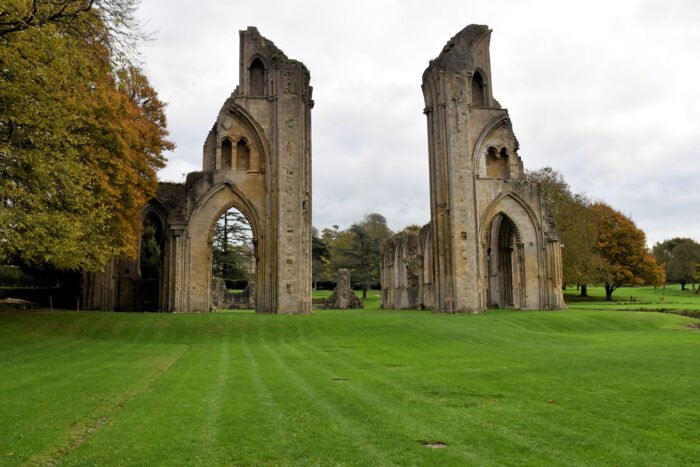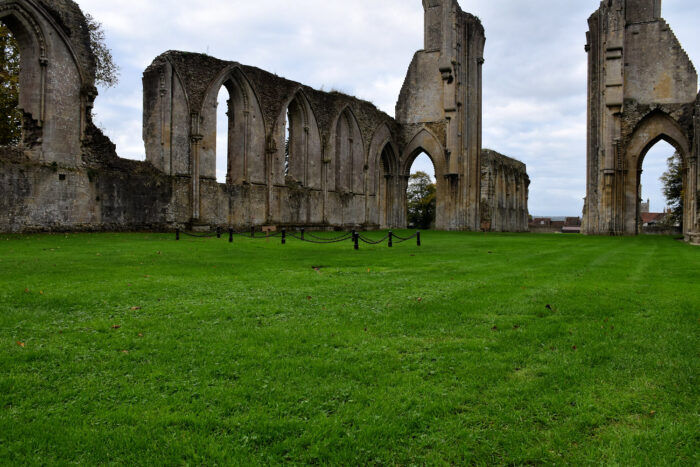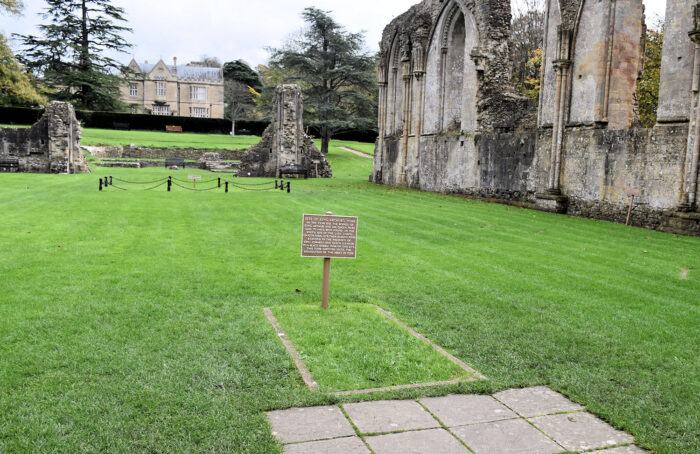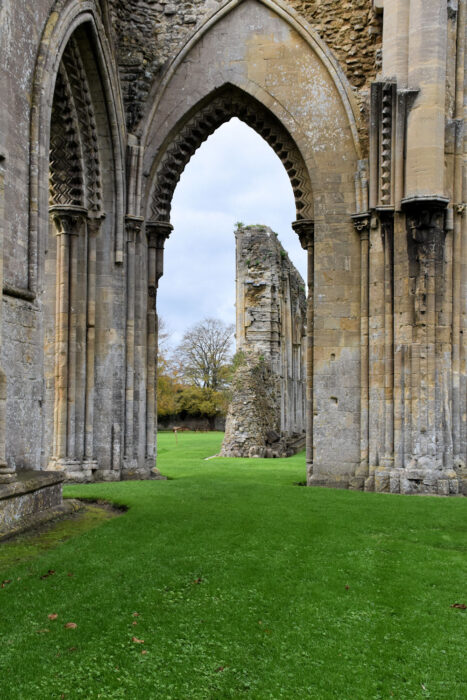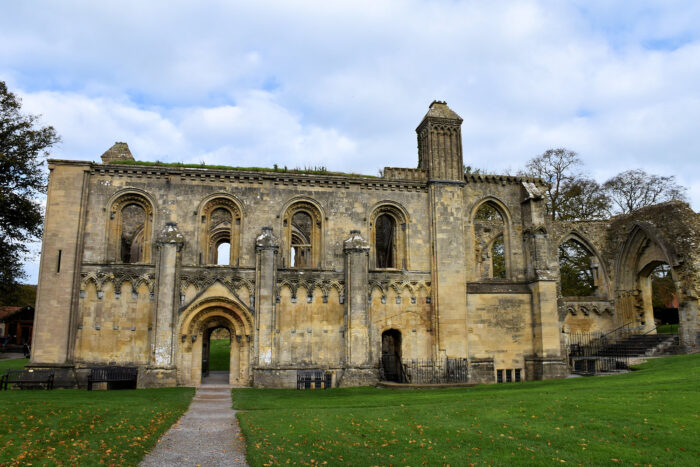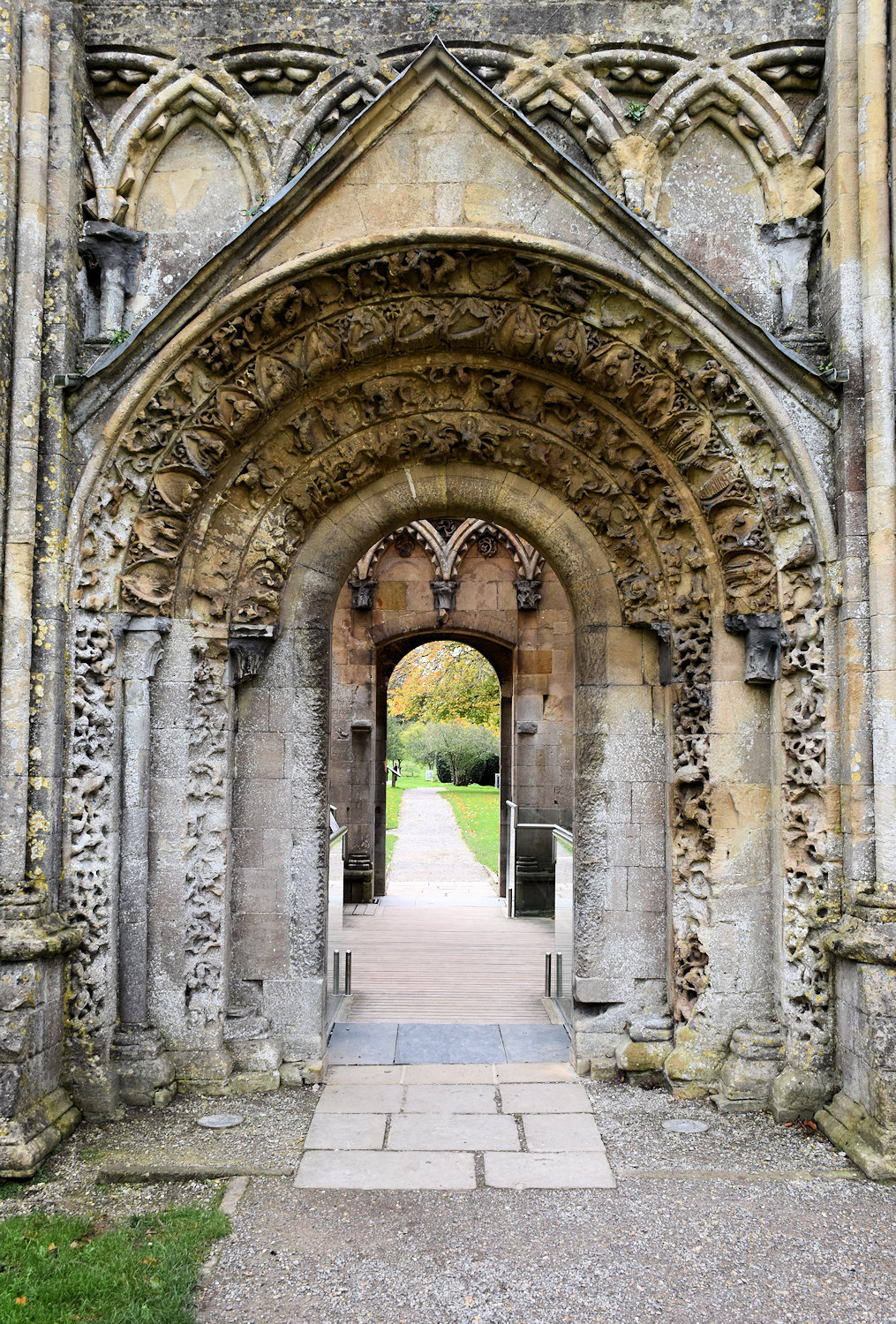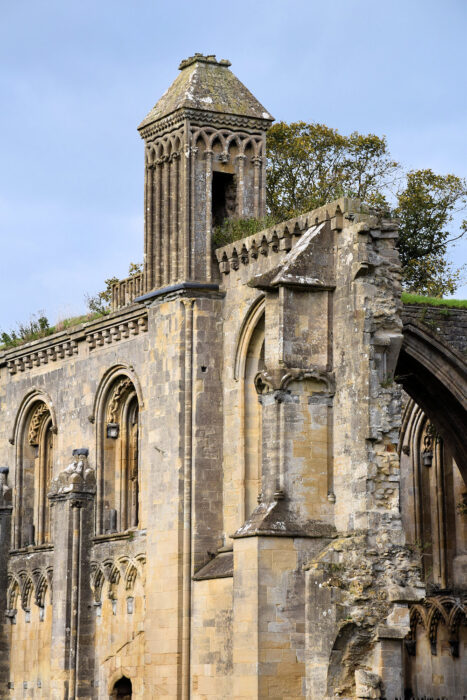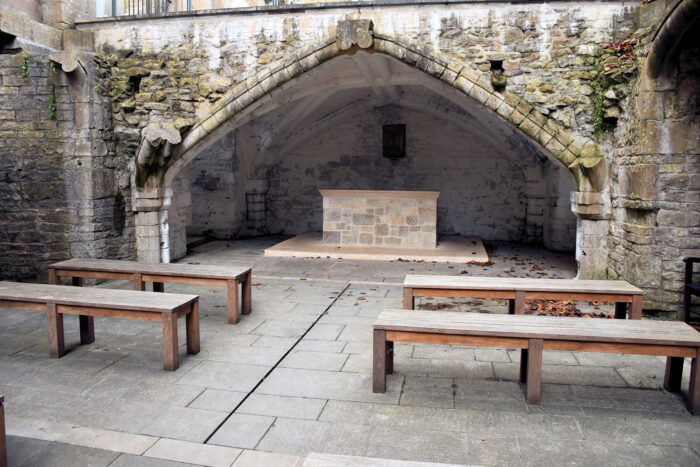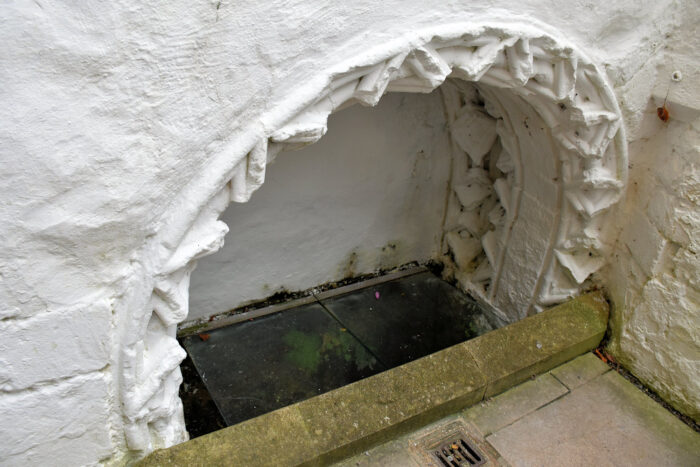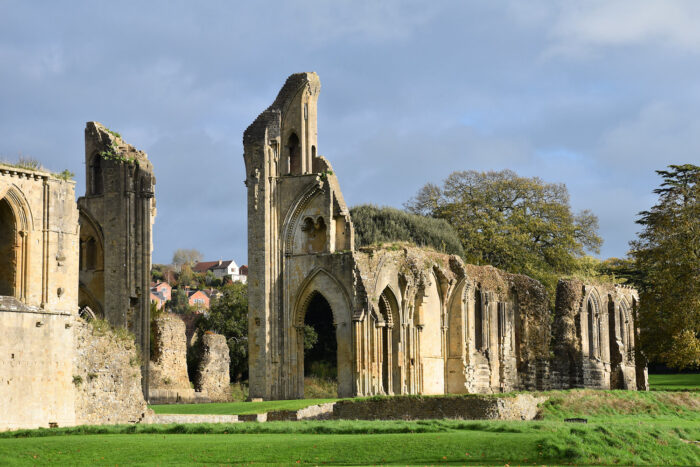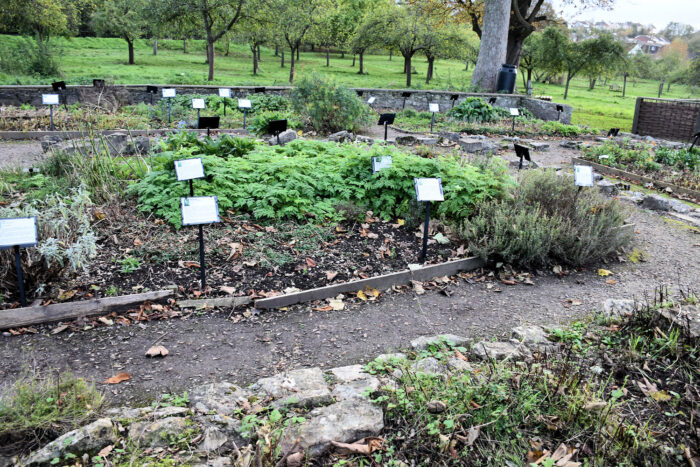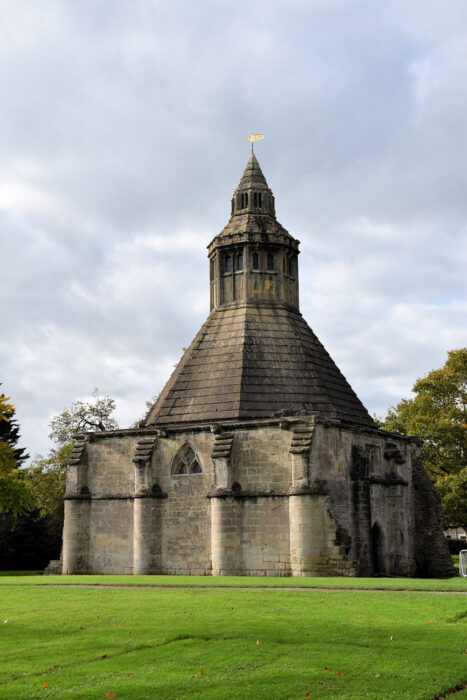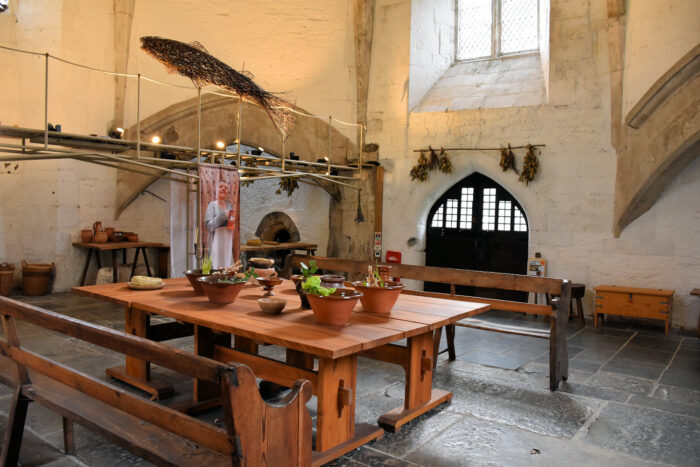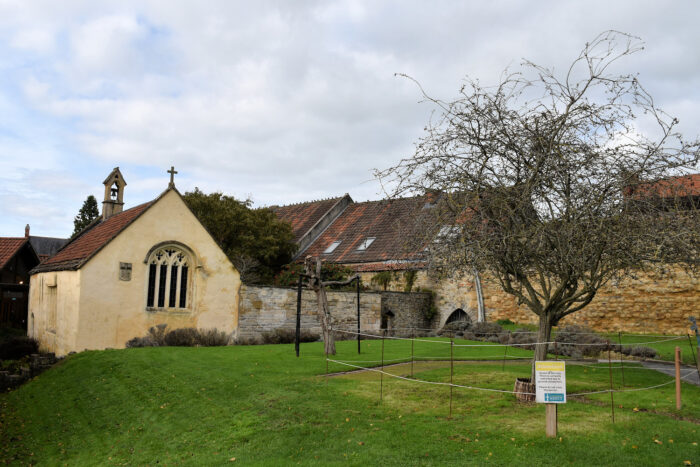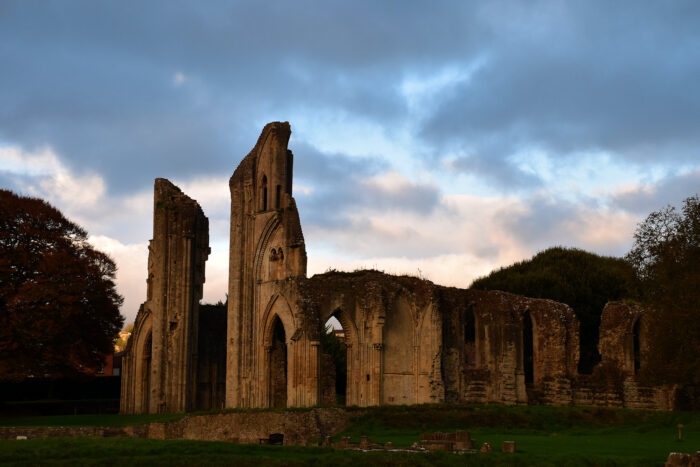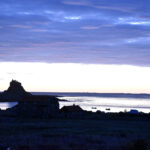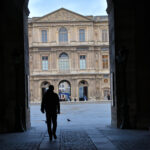I loved this place. It was full of interesting things to look at and also good for just sitting quietly. I went first thing in the morning. There were maybe a dozen other people there, but as it’s a big site (there’s some gardens off to the side), it felt more deserted than crowded. As the entry ticket lets you come and go throughout the day, I went back just before the last entry and stayed until closing.
The first thing you see on entry is the Lady Chapel.
The monastery that was here dates back to Saxon times, the 7th or 8th century, and there was a church here before that. It was an important–and influential–institution in Medieval Christian England.
But in 1184 there was big fire that burnt down many of the monastery’s buildings, and the old church as well. As a replacement, the monks wanted to build a great church but they ran out of money. Then they discovered the tomb of King Arthur and his second wife! Which brough pilgrims (and money). Who says God doesn’t perform miracles.
(That is what happened.) (Also maybe some political stuff going on.) (And I want to know about his first wife.)
The ruins of the great church, but that’s not the entry to the church. Where I’m standing is the nave (what you might think of as the body of the church, where people sit). The arches are the entry to the choir (or quire).
That’s the choir (at Kirkwall) and the main altar is behind it.
Here’s a model of the abbey. See the bits that stick out the side (the transepts, marked with the right most arrow), the choir wall starts in the middle of them.
So this bit enclosed by the ruins is the rear part of the church. (The bit marked out with black chains is the location of the altar.) Sitting there, it doesn’t seem that bit. You don’t really get an idea of how big this area is until you walk the length of it. (I have a video showing that but it’s VERY shaky.)
That bit at the front shows where Arthur’s tomb was put. When the monastery was dissolved in the 16 century, along with all the others, the tomb disappeared too
That’s the wall of the nave through the arch.
The Lady Chapel was built on the site of the old church, and was the first bit built after the great fire.
The door is interesting. The right hand photo comes from a panel on site, which also provides the following “key” to the decorations.
INNER ORDER
1. The Annunciation, the Virgin Mary on the left and Angel Gabriel on the right.
2. The Visitation, Mary and her cousin Elizabeth embracing.
3. The Nativity, a bed set under a three-arched canopy and Joseph seated on the right.
4. An Angel with spread wings brings good tidings to the shepherds. The three kings before King Herod, seated on the right.
OUTER ORDER
1. The Epiphany, the three kings offering gifts to Jesus.
2. The three kings ride away on horseback.
3. The three kings asleep, the first figure warned in a dream of King Herod’s plans.
4. The massacre of the innocent children, Herod seated between three soldiers and two weeping mothers on the right.
5. The return of the Holy Family from Egypt, beginning with Joseph warned in a dream.
Underneath is St Joseph’s Crypt and Well.
From the onsite panel:
The well is fed by a spring in the natural rock. In medieval times it was enclosed within a well-house and approached by a stairway. . . . When the late medieval crypt was constructed, the passageway between it and the well-house was inserted. The cult of St Joseph of Arimathea was very important at Glastonbury and the crypt became a popular destination for pilgrims. Miracles and cures were recorded here in the early 16th century, when victims of lameness, the plague and childhood diseases were brought back to health.
After the dissolution of the abbey in 1539, the crypt and well-house became filled with earth and rubble. When William Stukeley visited the abbey in 1724, he described the crypt full of water and noted that many lead coffins had been found there. In 1825 the crypt and well-house were cleared and Revd Richard Warner reported great excitement at their rediscovery.
Last morning sun.
Part of the recreated Medieval garden. The herb garden. Vegetable are in the fence off section (to the right).
One of the intact buildings, the Abbot’s Kitchen.
Another chapel, St Patrick’s. An earlier building probaby converted to a chapel in the early 16th century. As for the tree:
The Glastonbury thorn is a form of common hawthorn, Crataegus monogyna ‘Biflora’ (sometimes incorrectly called Crataegus oxyacantha var. praecox), found in and around Glastonbury, Somerset, England. Unlike ordinary hawthorn trees, it flowers twice a year (hence the name “biflora”), the first time in winter and the second time in spring. The trees in the Glastonbury area have been propagated by grafting since ancient times. The tree is also widely called the holy thorn, though this term strictly speaking refers to the original (legendary) tree. It is associated with legends about Joseph of Arimathea and the arrival of Christianity in Britain, and has appeared in written texts since the medieval period. A flowering sprig is sent to the British Monarch every Christmas. The original tree has been propagated several times, with one tree growing at Glastonbury Abbey and another in the churchyard of the Church of St John. The “original” Glastonbury thorn was cut down and burned as a relic of superstition during the English Civil War
Wikipedia
Sunset 🙂

